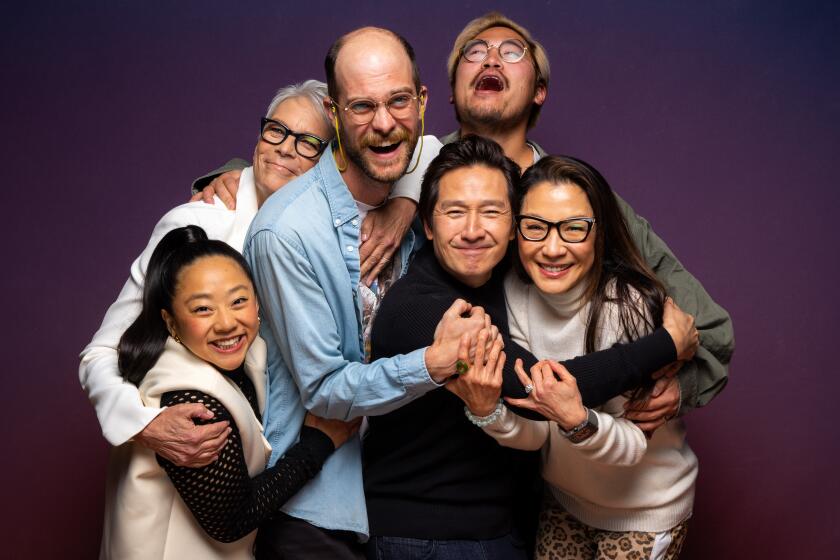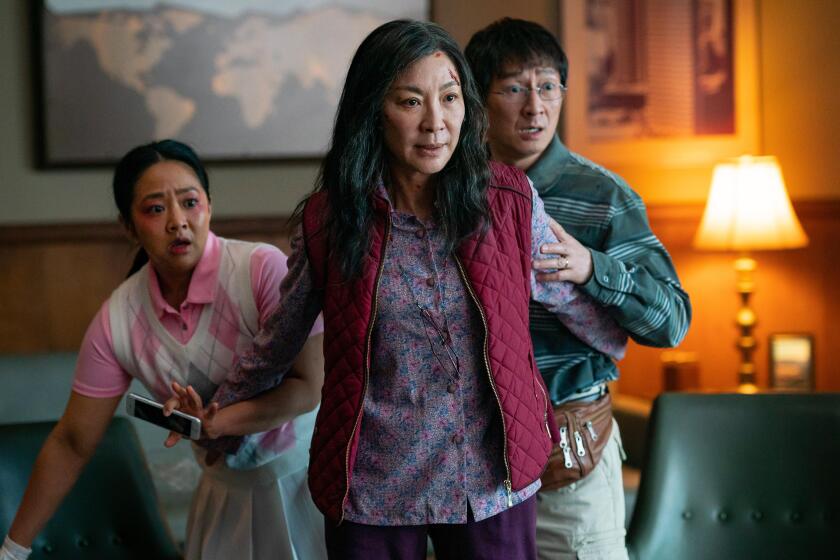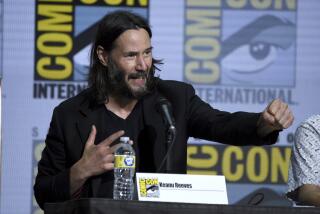‘Everything Everywhere All at Once’ explained: Hot dog hands, empathy challenges and meaning in the absurd
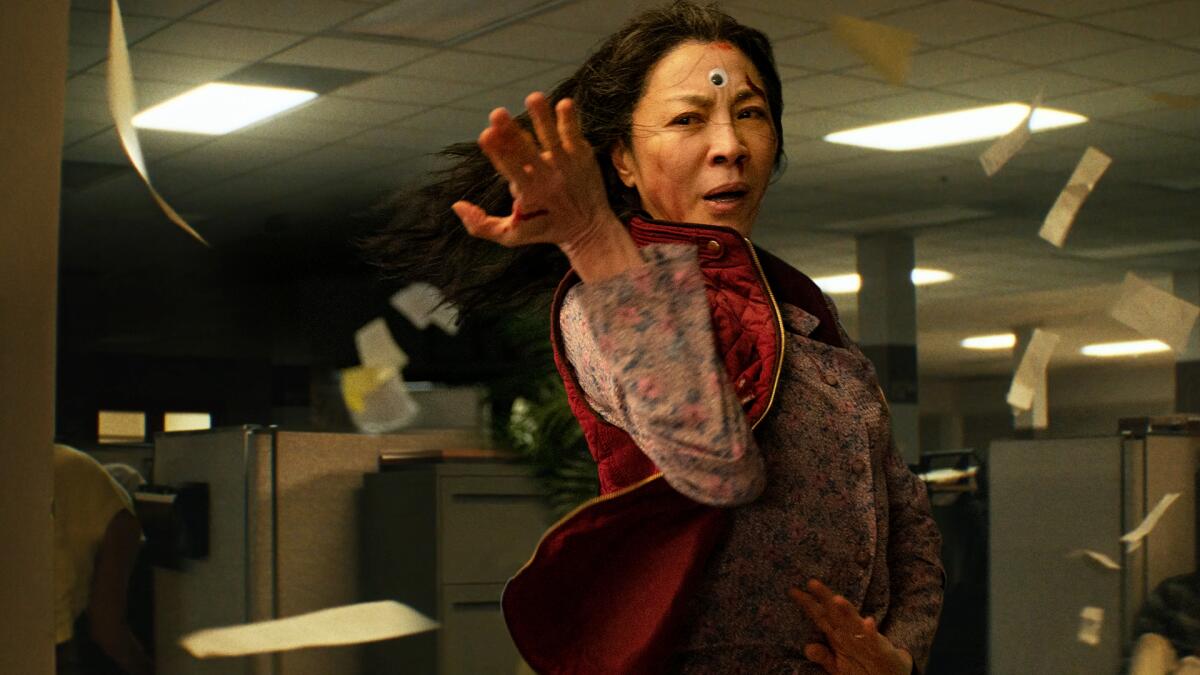
- Share via
From IRS audits to sentient rocks to hot dog hands and beyond, the mundane and the inane collide with the profound in “Everything Everywhere All at Once,” the Michelle Yeoh A24 action sci-fi pic that’s drawn at-times-ecstatic acclaim since opening in limited release last month.
Where did all these zany ideas come from? Well, where do any ideas come from? Ask filmmaking duo Daniel Kwan and Daniel Scheinert, known as Daniels, and they might have a different answer each day.
On this particular afternoon in this particular universe, as they Zoom together in Kwan’s lightly cluttered home office in Los Angeles, they trace a line back to their last movie, “Swiss Army Man,” a poignant 2016 dramedy about human connection that Scheinert modestly describes as their “feature film about a farting corpse.”
Following its critical and box office successes, “Everything Everywhere All at Once” leads Oscar nominations.
“We showed it to our parents and it sparked so many conversations,” said Scheinert, who with Kwan spent a decade building their eccentric brand around mind-boggling music videos, shorts and films. “It made us reflect: why did we feel the need to make something so strange — and why is it so hard for our parents to understand it?”
“Everything Everywhere All at Once” follows Evelyn Wang (Yeoh), a woman drowning under the stress of her family’s failing laundromat, her ailing marriage to Waymond (Ke Huy Quan) and the elderly father (James Hong) who disapproves of her life choices. But it’s the widening gulf between Evelyn and her daughter Joy (Stephanie Hsu) that threatens to unravel the fabric of existence as she learns that she’s just one in a vast multiverse of Evelyns — and the only one who can save it.
In Hollywood’s most original sci-fi multiverse to date, practically every scene is filled with details epic and silly. Here — spoilers ahead — Daniels zero in on how they cooked up some of their wildest ideas and found beauty and meaning in the absurd.
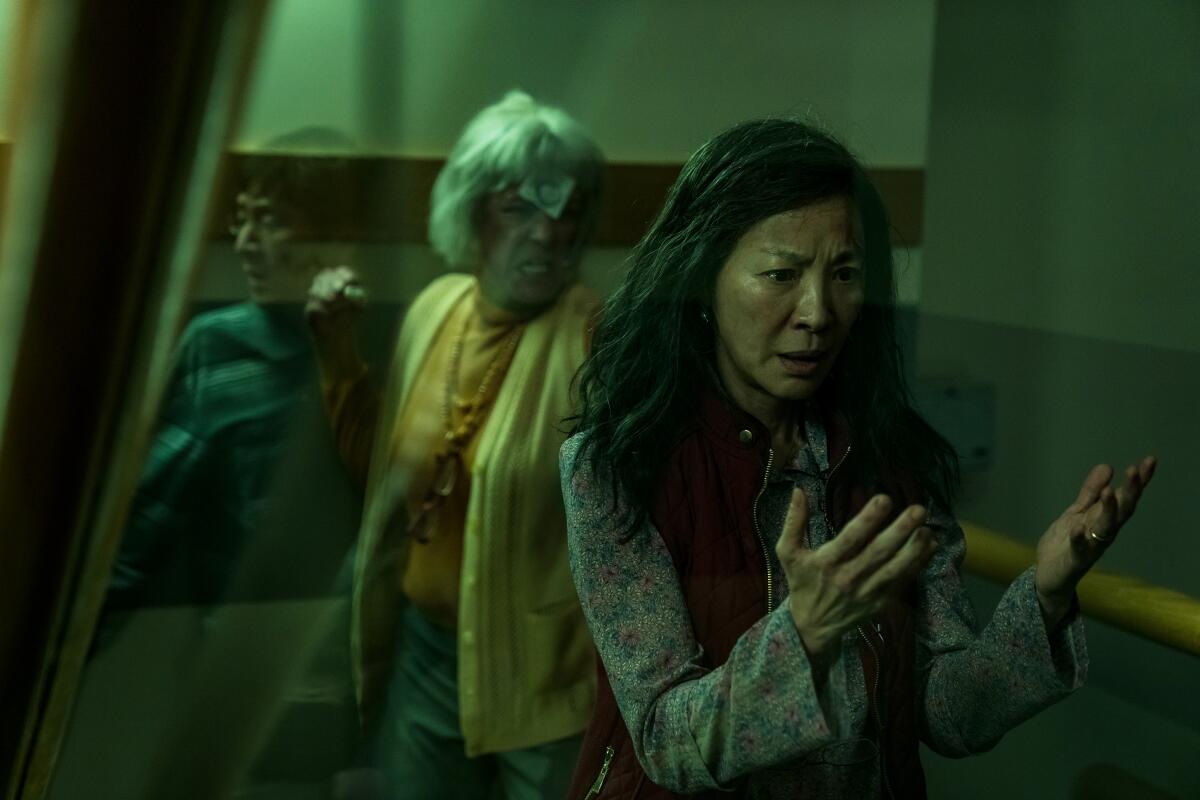
The metaverse as metaphor for internet overload
Written in 2016, “Everything Everywhere” was in part a product of the “contradictions and emotional whiplash” of being very online at the time. “The internet had started to create these alternate universes,” said Kwan. “We were for the first time realizing how scary the internet was, moving from this techno optimism to this techno terror. I think this movie was us trying to grapple with that chaos.”
Daniels credit their style and tone to the “weird algorithm” that fed them a steady diet of unconventional YouTube videos, influencing their own absurdist shorts and hit videos like DJ Snake’s “Turn Down for What,” in which people rhythmically hump-crash their way through an apartment high-rise.
Stars Michelle Yeoh and Stephanie Hsu on the hot dog hands, zany martial arts fights and mother-daughter love story at the core of ‘Everything Everywhere All At Once’
But as they kept dreaming up crazy concepts sure to rack up views, they realized: “We should be saying something meaningful, because this stuff takes a lot of effort.”
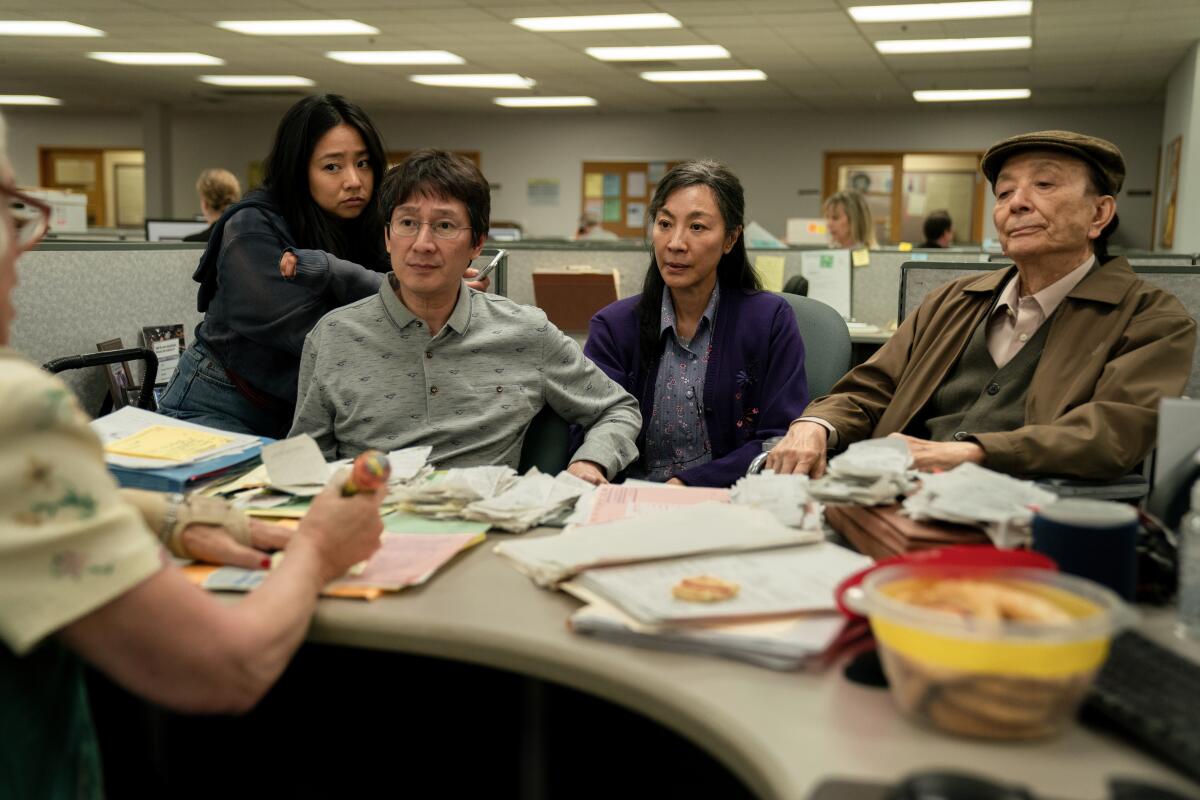
Asian American immigrant heroes
The filmmakers didn’t set out to build the film around immigrant heroes, but borrowing textures and dynamics from Kwan’s Chinese American family naturally made it so. Plus, anchoring a multiverse tale in an immigrant perspective lent deeper layers to the story, giving Evelyn cause to ponder the roads not taken.
“The question of ‘what if?’ looms over anyone who has had to upend their life and move somewhere else,” Kwan said. “So the multiverse was the perfect place for us to explore that, especially with a middle-aged immigrant person who has had a long life to look back on all their regrets. It wasn’t intentional, but it ended up being the perfect way to explore my parents’ story.”
The film’s mix of Cantonese, Mandarin, and blended Chinese and English may confuse some viewers, Kwan said — but it’s true to how he grew up, the son of immigrants from Taipei and Hong Kong.
“The family dynamic in our film was interesting because even before we get into the multiverse, they’re already in different worlds; they’re already speaking past each other,” Kwan said. There’s even something about Evelyn and Joy conversing as rocks overlooking the Grand Canyon that feels distinctly Asian American, he said.
“We don’t want to say the things we actually want to say. Let’s do it as rocks, but silently!” Kwan said, adding that emotional feedback came from Asian American viewers after screenings. “The fact that the parents kiss at the end is such a small gesture, but for a lot of people it was very powerful — because oftentimes our immigrant parents aren’t afforded the space to have romance or to have the ability to express themselves in that way.”
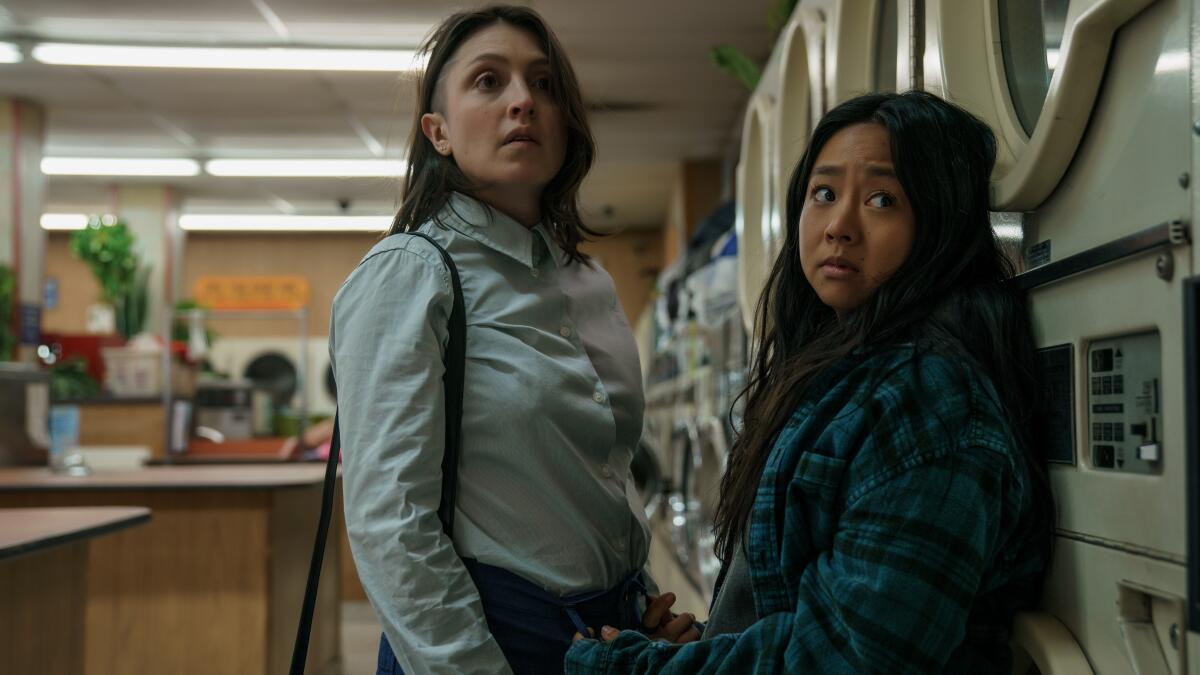
A generational divide
There is a heartwrenching misunderstanding between Evelyn and Joy — and Joy’s nihilist alter ego, Jobu Tupaki, who has channeled her pain into a burning desire to implode the multiverse with a black hole everything bagel. That resonated with Daniels as artists whose parents struggled to fully comprehend their career paths.
Seeing his own mother expand her comfort level with each phase of Kwan’s career inspired the ways in which Evelyn must continue to grow to accept the multitudes that Joy contains, including her queer identity. “This is in some ways my way of saying thank you to my mom for constantly allowing space for the unexpected parts of us to exist in her worldview,” Kwan said.
In an earlier draft, that wasn’t the case; Evelyn was more close-minded and “overtly homophobic.” But that didn’t feel true to their own lives. “Our parents try to be accepting. It’s just that they struggle to communicate with us,” said Scheinert. “And when we went back into the script with that perspective, it became a way more nuanced and interesting character.”
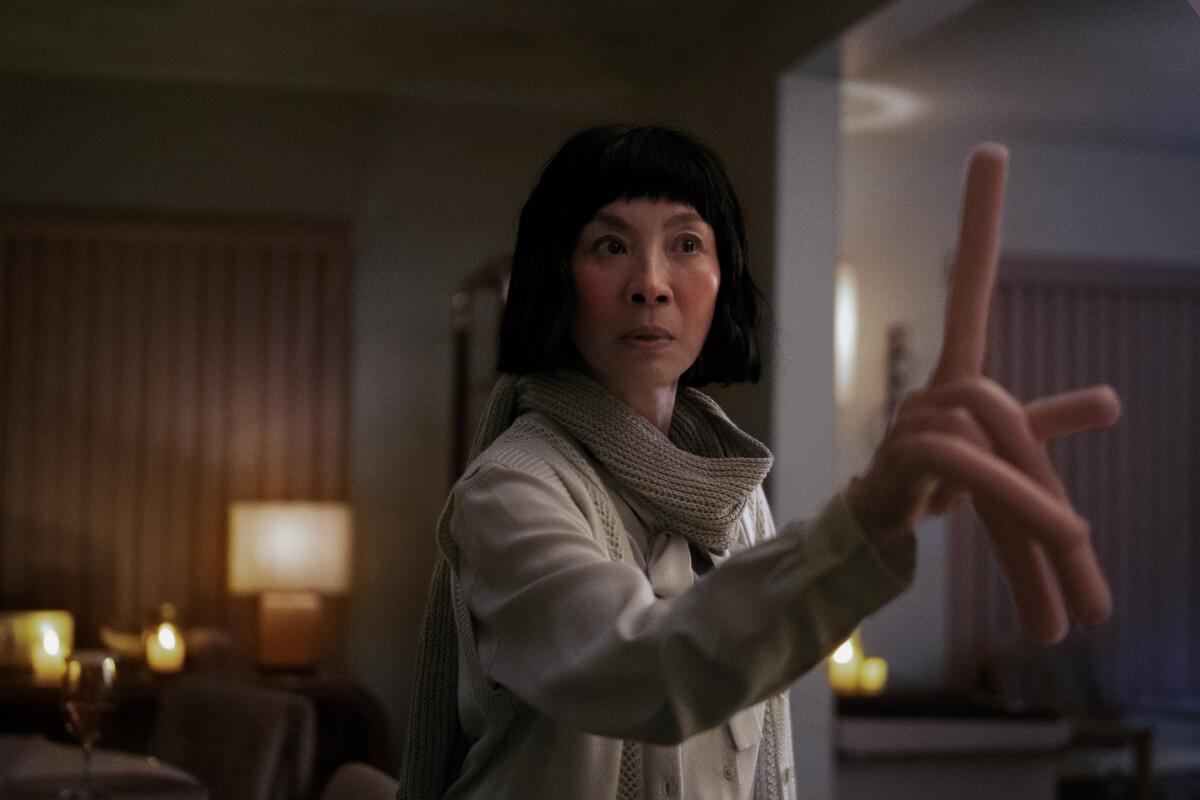
Three words: Hot dog hands
“Verse-jumping” into an alternate life in which Evelyn and her IRS nemesis, Deirdre Beaubeirdra (Jamie Lee Curtis), are in love — and have wieners for fingers — rigid Evelyn is forced to rethink her worldview.
“We were writing and thought, ‘We need to come up with a universe that’s the biggest empathy challenge,’” Scheinert said. “What was the toughest universe that was going to make Evelyn think the multiverse is gibberish when she first visits it — and by the end, can we make her and the audience care about that universe?”
Added Kwan: “It’s such a stupid idea. A 5-year-old has probably thought of this — oh, they look like fingers! The real difference is that we took the time to be like, in a world of hot dog hands, what is the beautiful story there?” Love, of course.
“Evelyn has to find a way to love a universe in which her auditor, the woman she hates the most of the world, is her lover, and their genetics have evolved in the way in which their mating ritual is so foreign and grotesque to her that she literally wants to gag from it,” Kwan said. “To take that absurd image and try to force her to see the beauty in it was a really fun challenge.”
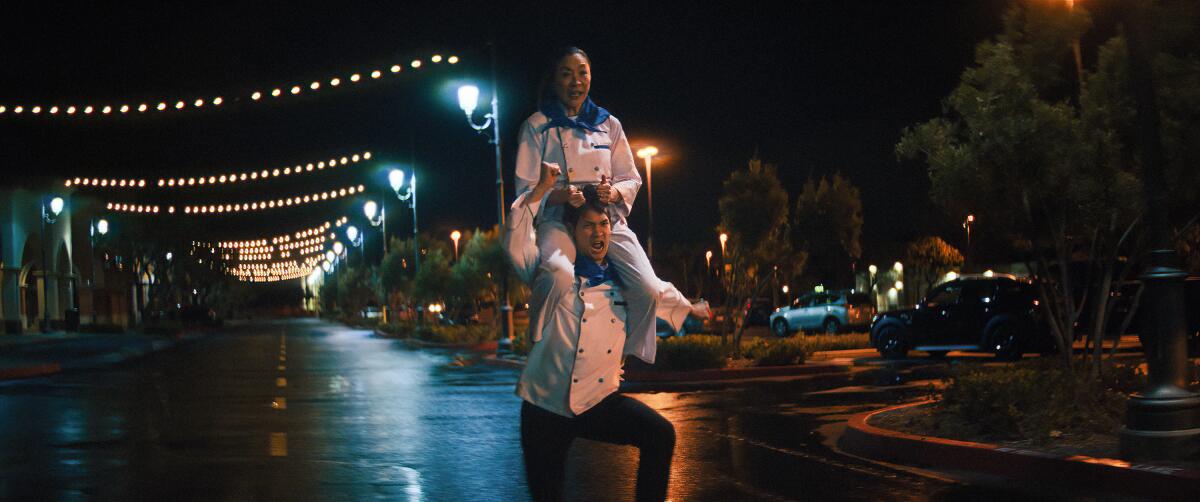
Raccacoonie and ‘all the brows’
In another universe Evelyn is a star teppanyaki chef who rats out her rival Chad (Harry Shum Jr.) and the anthropomorphic raccoon that lives under his hat, controlling his culinary moves, a la Pixar’s “Ratatouille.” The idea was inspired by producer Jonathan Wang’s late father.
“He loved movies but got the titles wrong all the time,” said Scheinert, smiling. “It was kind of a running joke in the family to be like, ‘Oh, what did Dad call that movie?’ And Jon’s favorite is that his dad really liked the movie ‘Outside Good People Shooting,’ which was ‘Good Will Hunting.’ He was close!”
Maxing out the concept of “Everything Everywhere,” they posited that if the multiverse is infinite, then every movie exists in its own universe. Chad and his raccoon (voiced by Randy Newman) allowed them to stage action scenes with Yeoh puppeting Shum’s body, and fold in “Ratatouille” themes of connection.
“When you stare at something for long enough, you can make anything meaningful,” said Kwan. “That’s a desperate, dangerous thing, but it’s also really beautiful. We need that right now because everyone is staring at everything and seeing no meaning at all. This movie’s almost us trying to fight that by saying, “Look, rocks can make you cry!” There’s beauty and meaning in everything. It can be butt plug trophies. It can be family drama in a laundromat. We’re putting them all on the same plane. There is no lowbrow or highbrow. It all exists and we have to be OK with that.”
Added Scheinert: “There’s lowbrow and highbrow, but all the brows are good.”
There’s lowbrow and highbrow. But all the brows are good.
— Daniel Scheinert
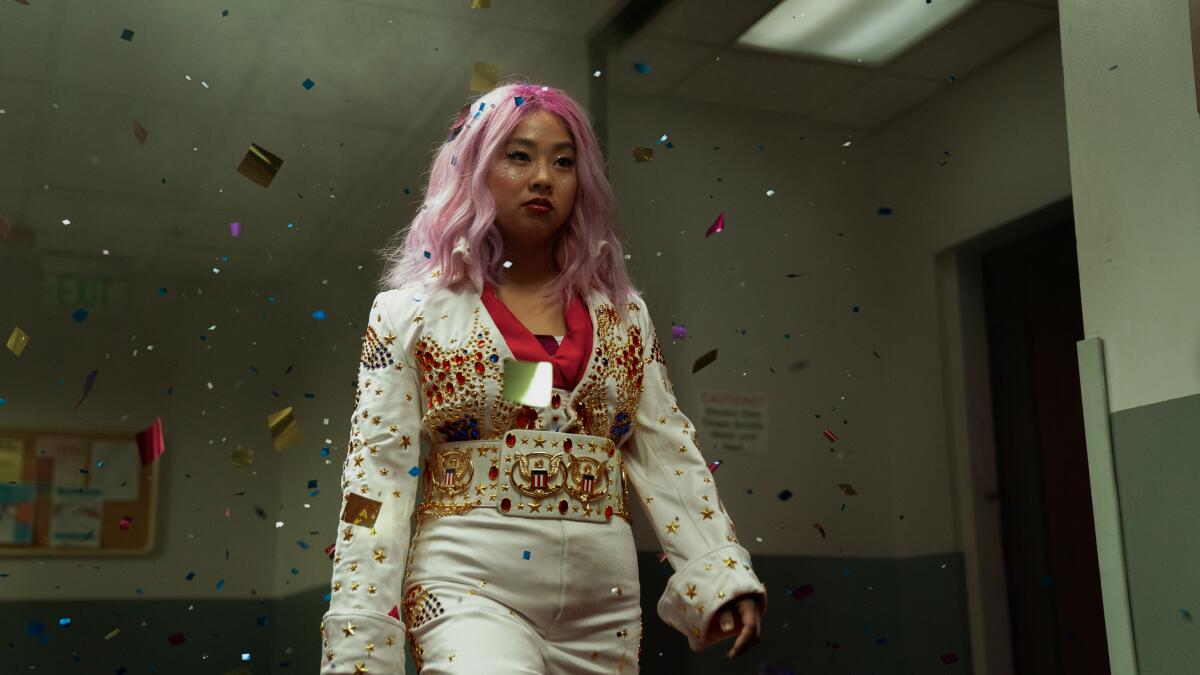
Jobu Tupaki
What’s in a name? Maybe nothing at all — and that’s partly the point. The all-powerful Jobu Tupaki, bent on destroying the multiverse to end the pain of her fractured relationship with Evelyn, was just the right nonsensical moniker that may have come to Kwan in a dream while he and his wife were brainstorming baby names.
“Miranda July wrote a book ‘The First Bad Man,’ and in the book the narrator is looking for a baby — her soulmate — that exists somewhere out in the universe, and she has called it Kubelko Bondy,” Kwan said. “What a fun word to say! Jobu Tupaki’s just a fun name to say. At one point we joked that we would name our baby that.”
In a previous draft, the name even had a back story in an even sillier universe populated by sentient spaghetti.
“They’re in a boiling pot and a hand comes out and scoops one out every so often and they call it Throwing Day,” said Kwan. “It’s a ritual where if you’re chosen, you get thrown against the wall and if you stick you progress into adulthood and you get a name. And Jobu Tupaki was her name.”
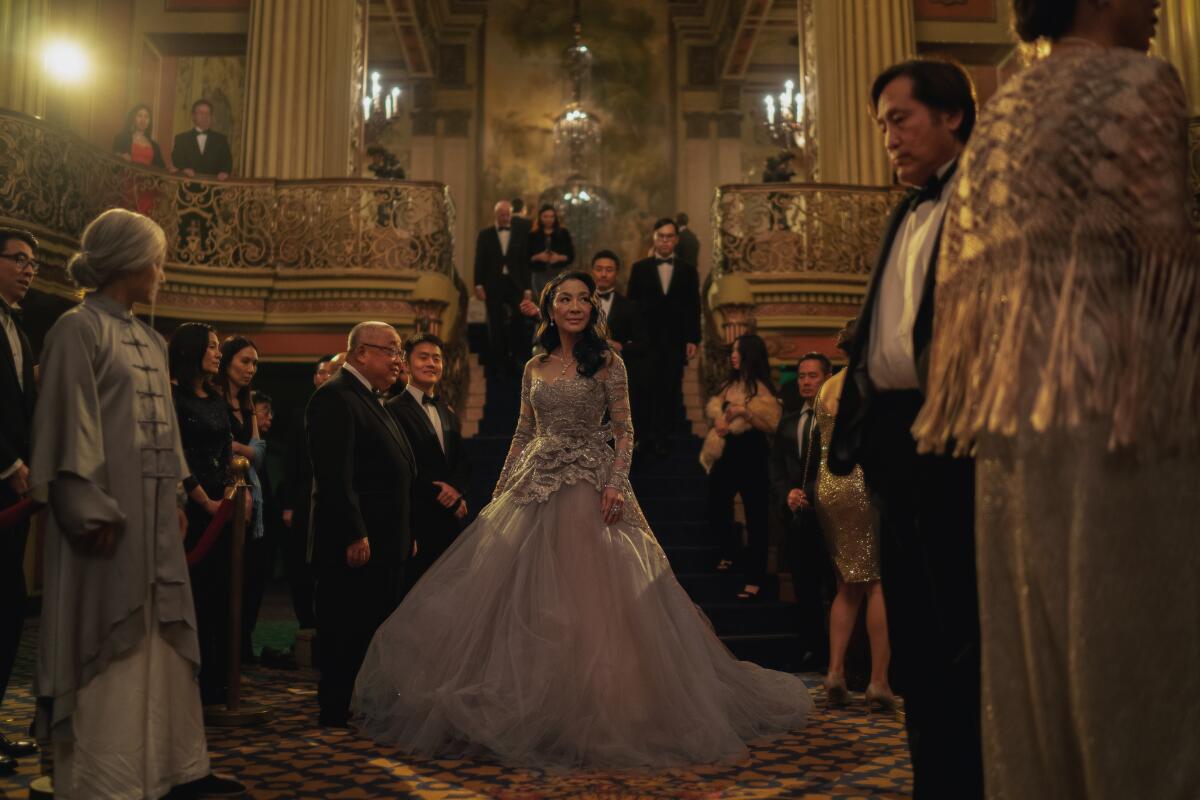
Going meta with the casting
Before casting Yeoh, Daniels had written a universe in which Evelyn was an MMA fighter. Once the “Crazy Rich Asians” actress and martial arts icon signed on, they seized the chance to wink at their audience using Yeoh’s real-life career as metafiction. Licensing clips from Yeoh’s filmography turned out to be too complicated, but keen eyes will spot actual red carpet footage in scenes from Evelyn’s glamorous alternate life ... as a Michelle Yeoh-esque movie star.
After a few drafts, they realized the deeper layers this Evelyn would impart. “The subtext of it is that every immigrant woman that you see on the street could be a superstar in our universe,” said Kwan.

Similarly, bringing former child star Quan into a dreamy world in which Waymond is a Wong Kar-wai-esque romantic hero harked back to the actor’s own life. Having quit acting after Steven Spielberg’s “Indiana Jones and the Temple of Doom” and “The Goonies” because of a lack of opportunities for Asian talent in Hollywood, Quan returned, decades later, for “Everything Everywhere.” In the interim he built a career behind the scenes working as an assistant director with filmmakers including the “In the Mood For Love” auteur.
“He would always bring up ‘Kar-wai’ and ‘Steven,’” added Scheinert. “And we’d be like, don’t talk about them on set! It’s too intimidating! But those are the filmmakers he knows best.”

‘Everything Everywhere All At Once’ — in a book
A companion book — titled “A Vast, Pointless Gyration of Radioactive Rocks and Gas In Which You Happen to Occur” — collects the philosophical, scientific and art-based research that Kwan and Scheinert compiled into a guide for cast and crew about the multiverse, nihilism, empathy fatigue and other ideas in the film.
“I’m bummed when a movie has science fiction but doesn’t go into the science at all or actively brushes over it,” Scheinert said. “And we felt that while writing this, there was so much we just couldn’t put it in [the film].”
Only loosely connected to the film, the book taps artists, philosophers, writers, scientists and assorted Daniels friends to expound on the implications of a multiverse. As Hollywood doubles down on such sagas — think “Spider-Man: Into the Spider-Verse,” “Doctor Strange in the Multiverse of Madness” and the cyclical properties of Marvel and DC — the concept has greater potential than how it’s being exploited in blockbuster pop culture, the filmmakers argued.
“The multiverse can be way more than just this corporatized version of it that we’re seeing right now, where it’s basically used for fan service or for cultural fracking, almost — like we’re mining our past cultures just so that we can resurrect them in new arrangements,” Kwan said.
“We should be looking to a forward-looking multiverse, because right now this universe we’re in is on a very scary path. And the multiverse is actually a really beautiful, important metaphor for right now because we need to be looking at all the possibilities, not just the one that we think we’re in,” he said. “And we definitely shouldn’t be looking backwards.”
More to Read
Only good movies
Get the Indie Focus newsletter, Mark Olsen's weekly guide to the world of cinema.
You may occasionally receive promotional content from the Los Angeles Times.
